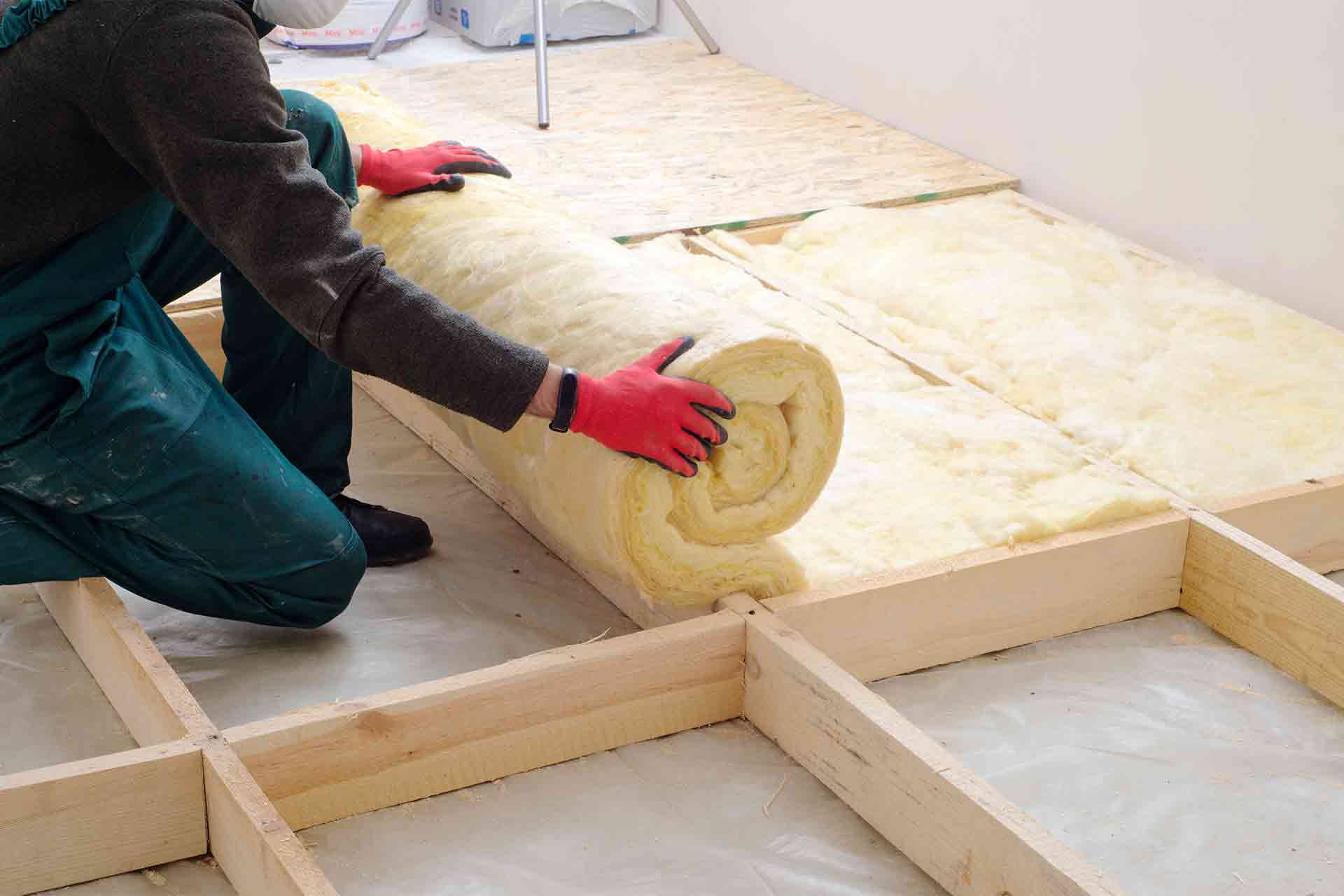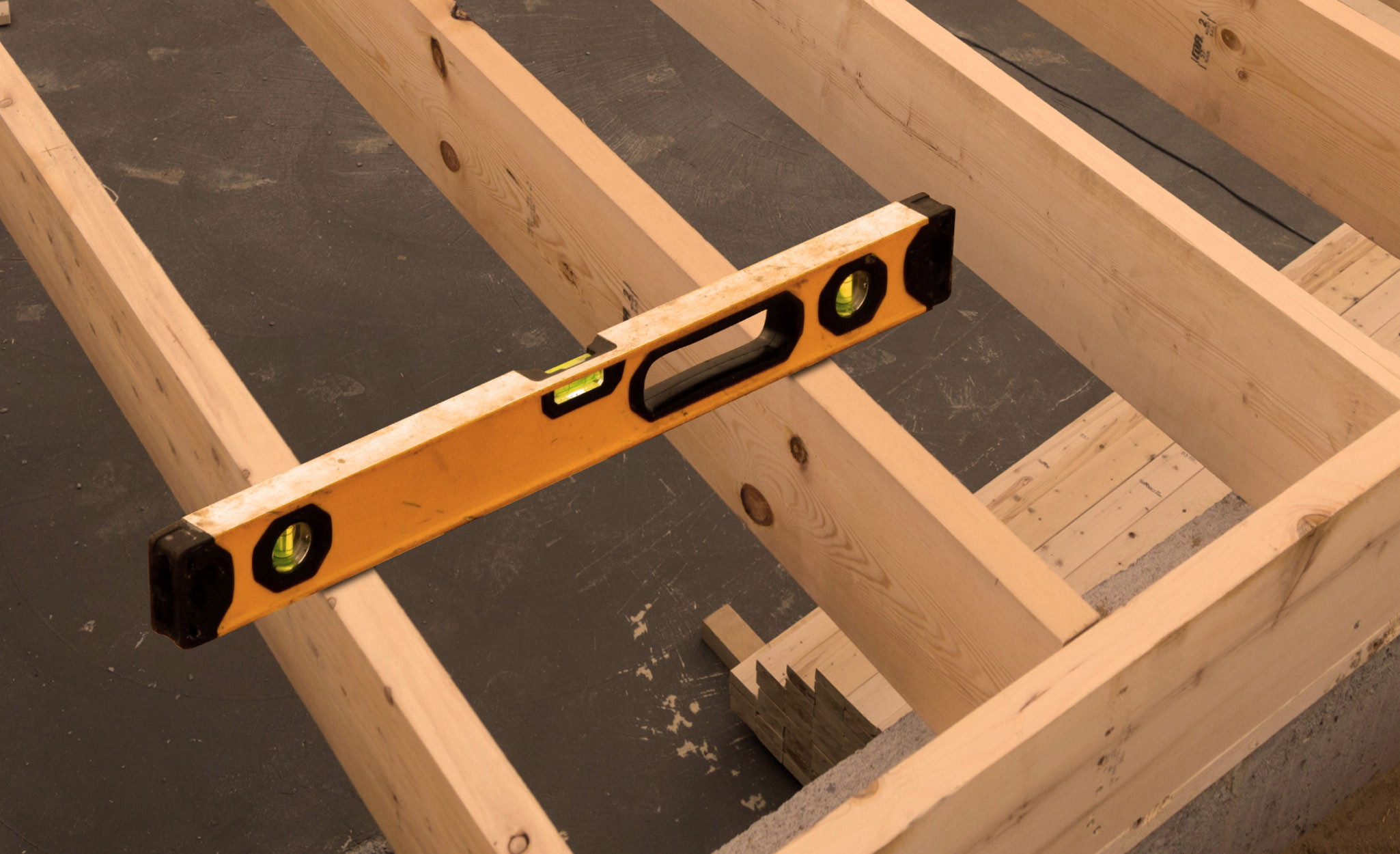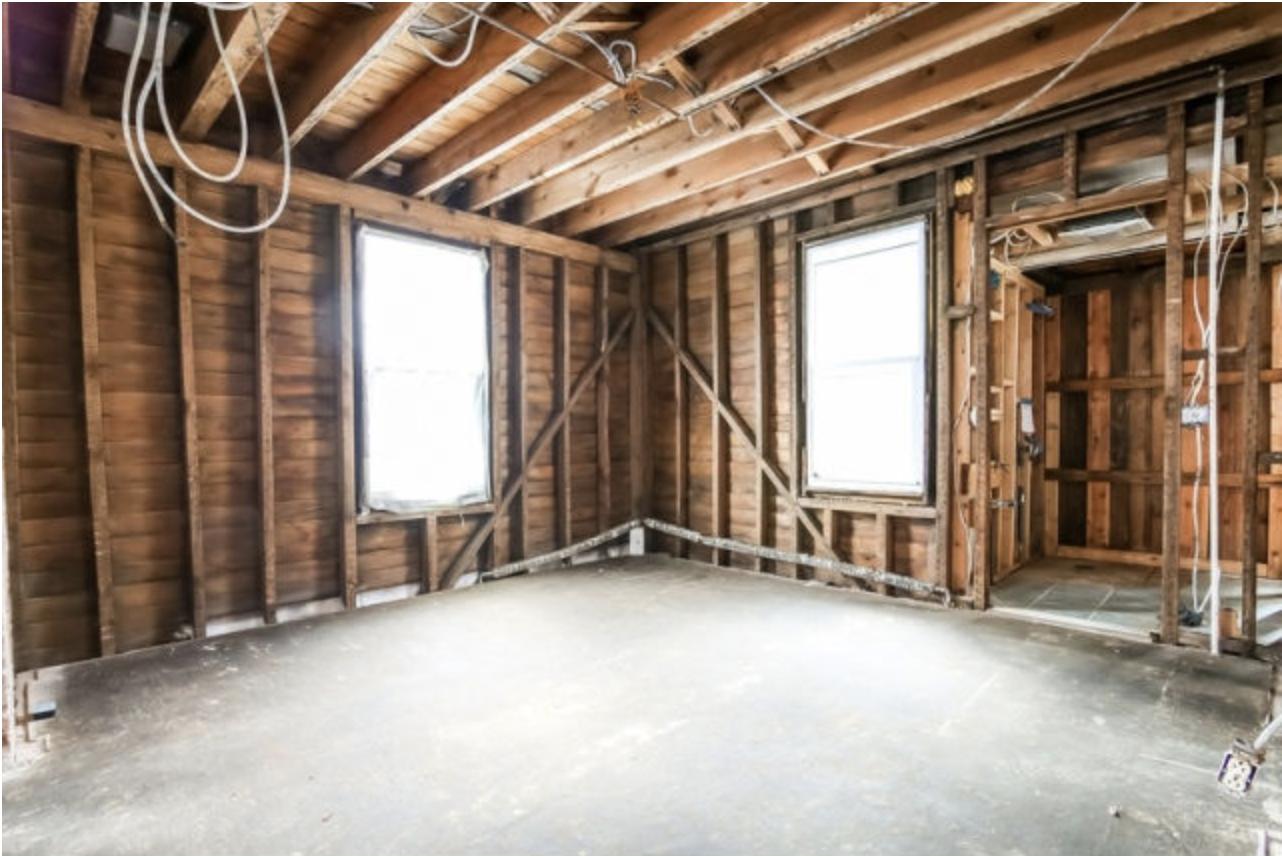

Articles
How To Insulate A Floor
Modified: October 28, 2024
Discover helpful articles on how to properly insulate a floor for improved energy efficiency and comfort. Implementing effective insulation techniques is key to reducing heat loss and lowering energy bills.
(Many of the links in this article redirect to a specific reviewed product. Your purchase of these products through affiliate links helps to generate commission for Storables.com, at no extra cost. Learn more)
Introduction
When it comes to creating a comfortable and energy-efficient home, insulation is key. While most homeowners are aware of insulating their walls and attics, many overlook the importance of insulating their floors. Properly insulating your floors helps to regulate temperature, reduce energy costs, and improve overall comfort within your living space.
In this article, we will guide you through the steps to effectively insulate your floors. Whether you have a concrete floor, wooden floor, or a suspended/timber floor, we will provide you with the necessary information and techniques to get the job done.
Before diving into the specifics of insulating different types of floors, it is important to understand the benefits of floor insulation. Firstly, insulation acts as a barrier between the floor and the cold ground, preventing heat loss and reducing draughts. This helps to maintain a consistent temperature, especially during the colder months.
Proper floor insulation also contributes to energy efficiency. By reducing heat loss, you can lower your heating expenses and minimize your carbon footprint. Additionally, insulation helps to reduce noise transmission, making your home a more peaceful and quiet environment.
Another advantage of insulating your floors is the improved comfort it provides. Insulation helps to create a more comfortable surface to walk on, as it prevents heat transfer from the cold ground. You’ll no longer have to endure icy floors during those chilly winter mornings.
Before we dive into the different methods of insulating various types of floors, let’s discuss the importance of selecting the right insulation materials. The type of insulation you choose depends on factors such as the location, environmental conditions, and budget.
Now that we’ve covered the basics, let’s explore the different insulation materials and methods that can be employed for different types of floors.
Key Takeaways:
- Properly insulating your floors is essential for maintaining a comfortable and energy-efficient home. It helps regulate temperature, reduce energy costs, and improve overall comfort while also contributing to energy efficiency and noise reduction.
- Choosing the right insulation materials and following the appropriate installation methods for your specific floor type are crucial for achieving optimal results. Whether it’s insulating a concrete, wooden, or suspended/timber floor, understanding the unique considerations and techniques for each type is key to successful insulation.
Read more: How To Insulate A Basement Floor
Choosing the Right Insulation Materials
When it comes to insulating your floors, selecting the right insulation materials is crucial. The type of material you choose will depend on factors such as the location, the type of floor, and your budget. Let’s explore some popular insulation options below:
Fiberglass Insulation
Fiberglass insulation is one of the most common and affordable options for insulating floors. It consists of fine glass fibers that are tightly packed together, creating a barrier against heat transfer. Fiberglass insulation is available in rolls or batts, making it easy to install between floor joists.
Spray Foam Insulation
Spray foam insulation is a versatile option that provides excellent insulation properties. It expands upon application, filling gaps and cracks to create an airtight seal. Spray foam insulation can be applied to various floor types, including concrete and wood. It offers high thermal resistance, moisture resistance, and soundproofing properties.
Cellulose Insulation
Cellulose insulation is made from recycled paper material and treated with fire-retardant chemicals. It is a sustainable option that provides effective thermal and sound insulation. Cellulose insulation can be blown or poured into floor cavities, ensuring a tight fit and minimizing heat loss.
Read more: How To Insulate A Sunroom Floor
Rigid Foam Insulation
Rigid foam insulation is a durable and moisture-resistant option that provides excellent thermal insulation. It comes in large sheets and can be installed directly on the floor surface or sandwiched between layers of flooring materials. Rigid foam insulation is commonly used for insulating concrete floors.
Cork Insulation
Cork insulation is a natural and eco-friendly option that is gaining popularity. It is derived from the bark of cork oak trees and has excellent thermal and sound insulation properties. Cork insulation can be installed as floating floorboards or added as an underlayer beneath other flooring materials.
Before selecting an insulation material, consider its thermal resistance (R-value), which measures its effectiveness in preventing heat transfer. The higher the R-value, the better the insulation. Additionally, ensure that the chosen material complies with building codes and regulations.
It’s also worth consulting with insulation professionals or conducting some research to determine the best insulation material for your specific needs. Keep in mind that different types of floors may require different insulation methods, as we will discuss in the next section.
Preparations before Insulating the Floor
Before you start insulating your floors, there are some important preparations to consider. Proper preparation ensures that the insulation process goes smoothly and maximizes the effectiveness of the insulation. Here are the key steps to take before insulating your floors:
1. Assess the Current Condition of the Floor
Before adding insulation, it’s essential to assess the current condition of the floor. Look for any signs of damage, moisture, or pest infestation. Addressing these issues beforehand is crucial to prevent further damage and ensure the longevity of your insulation.
Read more: How To Insulate Garage Floor
2. Clean the Floor Surface
Prior to installing insulation, thoroughly clean the floor surface. Remove any dirt, debris, or existing flooring materials. This ensures that the insulation adheres properly and provides a uniform thermal barrier.
3. Seal any Cracks or Gaps
Inspect the floor for any cracks or gaps and seal them accordingly. Use a suitable sealant or caulk to seal gaps between floorboards, around electrical outlets, and in other areas prone to air leakage. This step helps to create an airtight seal and minimize heat loss.
4. Address Moisture Issues
If there are any moisture issues present, such as dampness or leaks, it’s crucial to address them before insulating. Moisture can cause damage to the insulation and compromise its effectiveness. Ensure that the floor is dry and adequately waterproofed.
5. Consider Vapor Barrier Installation
Depending on the location and type of flooring, it may be necessary to install a vapor barrier. A vapor barrier helps to prevent moisture from seeping through the floor and causing damage to the insulation. Consult with a professional to determine if a vapor barrier is needed for your specific floor type.
Read more: How To Insulate Shed Floor
6. Check for Proper Ventilation
Good ventilation is essential to prevent moisture buildup and maintain a healthy living environment. Before insulating, ensure that any existing ventilation systems are in proper working order. Consider adding additional vents if needed, especially in areas prone to humidity or dampness.
By following these preparations, you can ensure that your floor insulation project is successful and that your floors are adequately protected and insulated. Now that you have taken care of the necessary preparations, let’s explore the methods for insulating different types of floors.
Methods for Insulating Different Types of Floors
Insulation methods vary depending on the type of floor you have. Whether you have a concrete floor, wooden floor, or a suspended/timber floor, there are specialized techniques to effectively insulate each type. Let’s take a closer look at the methods for insulating different types of floors:
Insulating a Concrete Floor
Concrete floors are commonly found in basements or ground-level spaces. To insulate a concrete floor, there are a few methods you can use:
- Under-Slab Insulation: This method involves placing insulation material beneath the concrete slab. Rigid foam insulation boards or spray foam insulation are commonly used for under-slab insulation.
- Insulated Concrete Forms (ICFs): ICFs are hollow foam blocks that are stacked to create a form for the concrete. They provide both insulation and structural support for the floor.
- Concrete Slab Insulation: This method involves adding insulation on top of the concrete slab, underneath the finished flooring. Rigid foam insulation boards can be glued or attached with fasteners to the concrete surface.
Insulating a Wooden Floor
Wooden floors are commonly found in upper-level rooms and can be insulated using the following methods:
- Subfloor Insulation: This method involves insulating between the floor joists from below, using insulation batts or rolls. It helps to prevent heat loss and reduce noise transmission.
- Ceiling/Floor Cavity Insulation: If there is access to the floor cavity, you can insulate it by installing insulation material between the floor joists. This is an effective method for improving thermal performance.
- Top Layer Insulation: Another option is to add a layer of rigid foam insulation on top of the existing floor. This method requires removing the finishing layer and installing the insulation before adding a new flooring material.
Read more: How To Insulate Porch Floor
Insulating a Suspended or Timber Floor
Suspended or timber floors are commonly found in older homes. Insulating these types of floors can be done using these methods:
- Between-Joist Insulation: This method involves inserting insulation material between the floor joists from below. Insulation batts or rolls can be used to fill the space and provide thermal insulation.
- Under-Joist Insulation: For suspended floors, you can install insulation material under the floor joists to create a thermal barrier. Rigid foam insulation or mineral wool can be used for under-joist insulation.
- Overlay Insulation: Another option is to add a layer of insulated panels or boards on top of the existing floor. This method helps to improve thermal performance without disturbing the original floor structure.
Keep in mind that these methods may require professional assistance or guidance, especially when dealing with complex structural elements. It’s essential to ensure that the insulation is properly installed and meets the necessary building codes and regulations.
Now that we’ve explored the methods for insulating different types of floors, let’s move on to a step-by-step guide that will walk you through the process of insulating your floors effectively.
Insulating a Concrete Floor
Insulating a concrete floor is essential for maintaining a comfortable and energy-efficient living space. By adding insulation to your concrete floor, you can minimize heat loss, reduce cold drafts, and create a more comfortable environment. Here are the steps to insulate a concrete floor:
1. Prepare the Surface
Before installing insulation, ensure that the concrete floor is clean, dry, and free of any debris. If there are any cracks or holes, seal them with an appropriate concrete filler or sealant. This step helps to create a smooth and stable surface for the insulation material.
2. Choose the Insulation Material
For insulating a concrete floor, there are a few insulation materials to consider:
- Rigid Foam Insulation: Rigid foam insulation boards are a popular choice for concrete floors. They are lightweight, moisture-resistant, and provide excellent thermal insulation. Cut the boards to size and ensure a tight fit between the floor joists.
- Spray Foam Insulation: Spray foam insulation can also be used to insulate concrete floors. It expands upon application, filling gaps, and creating an airtight seal. Professional installation is recommended for spray foam insulation.
- Vapor Barrier: Consider adding a vapor barrier beneath the insulation to prevent moisture transmission. A moisture barrier helps to keep the insulation dry and ensures its long-term effectiveness.
Read more: How To Install Insulation Under Floor
3. Install the Insulation
Once you have chosen the insulation material, it’s time to install it:
- If using rigid foam insulation boards, cut them to fit between the floor joists and press them tightly against the concrete floor. Secure them in place using construction adhesive or fasteners, following the manufacturer’s instructions.
- If using spray foam insulation, hire a professional insulation contractor to apply the foam evenly across the concrete floor surface. They will ensure that the foam fills all gaps and creates a continuous thermal barrier.
4. Seal the Edges
After the insulation is in place, seal the edges around the perimeter of the floor. Use an appropriate sealant or tape to create an airtight seal, preventing air leakage and maximizing the insulation’s effectiveness.
5. Finish the Floor
Once the insulation is installed, you can proceed with finishing the floor surface according to your preferences. This may involve adding a moisture barrier, underlayment, and then the desired flooring material such as carpet, laminate, or tile.
Remember to follow the manufacturer’s instructions and any local building codes or regulations when installing insulation on concrete floors. Hiring a professional insulation contractor may be beneficial, especially for more complex projects or if you are unfamiliar with the insulation installation process.
Insulating your concrete floor can significantly improve the overall comfort and energy efficiency of your home. By taking the necessary steps to properly insulate your concrete floor, you will create a more comfortable living space and potentially save on energy costs in the long run.
Insulating a Wooden Floor
Insulating a wooden floor is important for improving energy efficiency and creating a more comfortable living space. Wooden floors are commonly found in upper-level rooms and can be insulated using various methods. Here’s a step-by-step guide on how to insulate a wooden floor:
Read more: What Type Of Insulation For Floors
1. Determine the Insulation Method
There are several methods you can use to insulate a wooden floor, depending on accessibility and specific requirements. Consider the following options:
- Subfloor Insulation: This method involves insulating between the floor joists from beneath the floor. It is effective for improving thermal insulation and reducing noise transmission.
- Ceiling/Floor Cavity Insulation: If there is access to the floor cavity from below, you can insulate it by placing insulation material between the floor joists. This method is especially useful for improving thermal performance.
- Top Layer Insulation: Another option is to add insulation on top of the existing wooden floor. This method requires removing the finishing layer and installing the insulation before adding a new flooring material.
2. Prepare the Floor
Before installing insulation, ensure the wooden floor is clean and free of any debris. If there are any cracks or gaps between the floorboards, fill them with a suitable sealant or caulk. This helps to create a smooth and even surface for the insulation material.
3. Choose the Insulation Material
There are several insulation materials suitable for insulating wooden floors:
- Insulation Batts or Rolls: Fiberglass or mineral wool insulation batts or rolls are a common choice for wooden floor insulation. They are available in various sizes and thicknesses and can be easily fitted between floor joists.
- Rigid Foam Insulation: Rigid foam insulation boards are another option for insulating wooden floors. They provide excellent thermal resistance and can be cut to fit snugly between the floor joists.
Consider the insulation material’s R-value (thermal resistance) and the space available for installation when deciding which type of insulation to use.
4. Install the Insulation
Once you have chosen the insulation material, it’s time to install it:
- If using insulation batts or rolls, insert them between the floor joists, ensuring a snug fit. Make sure to cover the entire floor area and fill any gaps or voids.
- If using rigid foam insulation boards, cut them to size and fit them tightly between the floor joists. Secure them in place using construction adhesive or mechanical fasteners.
Read more: What Insulation To Use In Floor Joists
5. Seal the Edges
After the insulation is in place, seal any gaps or cracks around the edges with an appropriate sealant or tape. This helps to create an airtight seal, preventing air leakage and maximizing the insulation’s effectiveness.
6. Finish the Floor
Once the insulation is installed and sealed, you can proceed with finishing the wooden floor surface. This may involve adding an underlayment, moisture barrier, and then the desired flooring material such as hardwood, laminate, or carpet.
Remember to consult local building codes and regulations when insulating a wooden floor. If you are unsure about the insulation installation process or have a complex project, it’s advisable to seek professional assistance or guidance. Properly insulating your wooden floor can provide better thermal performance, noise reduction, and overall comfort in your home.
Insulating a Suspended or Timber Floor
Insulating a suspended or timber floor is crucial for improving energy efficiency and enhancing the comfort of your living space. These types of floors are commonly found in older homes and can be insulated using various methods. Here’s a step-by-step guide on how to insulate a suspended or timber floor:
Read more: What Type Of Insulation For Floors
1. Determine the Insulation Method
There are several methods you can use to insulate a suspended or timber floor, depending on accessibility and specific requirements. Consider the following options:
- Between-Joist Insulation: This method involves inserting insulation material between the floor joists from below. It is an effective way to improve thermal insulation and reduce heat loss.
- Under-Joist Insulation: For suspended floors, insulation can be installed underneath the floor joists. This method creates a thermal barrier and helps to prevent cold air from entering the floor space.
- Overlay Insulation: Another option is to add insulation as a layer on top of the existing floor surface. This method improves thermal performance without disturbing the original floor structure.
Read more: How To Insulate A Floor Over A Crawl Space
2. Prepare the Floor Space
Before installing insulation, ensure that the floor space is clean and free of any debris. Remove any obstructions or obstacles that may hinder the insulation process. This step ensures a smooth and accessible area for insulation installation.
3. Choose the Insulation Material
Consider the following insulation materials suitable for insulating suspended or timber floors:
- Insulation Batts or Rolls: Fiberglass or mineral wool insulation batts or rolls are commonly used for between-joist insulation. They are available in various thicknesses and can be easily fitted between the floor joists.
- Rigid Foam Insulation: Rigid foam insulation boards are another option for under-joist or overlay insulation. They provide excellent thermal resistance and can be cut to fit snugly in the floor space.
Take into account the insulation material’s R-value (thermal resistance) and the space available for installation when choosing the best insulation for your suspended or timber floor.
4. Install the Insulation
Once you have chosen the insulation material, it’s time to install it based on the selected insulation method:
- If using insulation batts or rolls, insert them tightly between the floor joists, ensuring a snug fit. Make sure to cover the entire floor area and fill any gaps or voids.
- If using rigid foam insulation boards, cut them to size and fit them tightly under the floor joists or as an overlay on top of the existing floor. Secure them in place using construction adhesive or mechanical fasteners.
Read more: What Insulation To Use In Floor Joists
5. Seal the Edges
After the insulation is installed, seal any gaps or cracks around the edges with an appropriate sealant or tape. This helps to create an airtight seal, preventing air leakage and maximizing the insulation’s effectiveness.
6. Finish the Floor
Once the insulation is installed and sealed, you can proceed with finishing the floor surface according to your preferences. This may involve adding an underlayment, moisture barrier, and then the desired flooring material such as hardwood, laminate, or carpet.
Remember to consult local building codes and regulations when insulating a suspended or timber floor. If you are unsure about the insulation installation process or have a complex project, it’s advisable to seek professional assistance or guidance. Properly insulating your suspended or timber floor can provide better thermal performance, reduce heat loss, and enhance the comfort of your home.
Step-by-Step Guide to Insulating a Floor
Insulating your floors is an important step in creating an energy-efficient and comfortable living space. Whether you have a concrete floor, wooden floor, or a suspended/timber floor, here’s a step-by-step guide to help you insulate your floor effectively:
Step 1: Assess the Floor
Start by assessing the condition of your floor. Look for any damage, moisture issues, or pest infestations. Address any necessary repairs before moving forward with insulation.
Step 2: Choose the Insulation Material
Research and choose the appropriate insulation material for your specific floor type. Consider factors such as thermal resistance (R-value), moisture resistance, and any local building codes or regulations.
Read more: What Size Insulation For 2X8 Floor Joist
Step 3: Prepare the Floor Surface
Clean the floor surface to remove any dirt or debris. Ensure the surface is dry and free from any obstructions. Seal any cracks, gaps, or holes with an appropriate sealant or filler.
Step 4: Install the Insulation
Depending on the type of floor, install the insulation as follows:
- Concrete Floor: If insulating a concrete floor, lay down the chosen insulation material, such as rigid foam boards or spray foam, according to the manufacturer’s instructions. Ensure a snug fit and seal any gaps or joints.
- Wooden Floor: For a wooden floor, insert insulation batts or rolls between the floor joists. Make sure to fill the entire cavity and achieve a tight fit. Alternatively, consider adding a layer of rigid foam insulation on top of the existing floor before finishing it with new flooring material.
- Suspended or Timber Floor: Insulate a suspended or timber floor by installing insulation between the floor joists. Use insulation batts, rolls, or rigid foam boards, and secure them tightly in place. If accessible, you can also insulate underneath the floor by adding insulation between the joists or using an overlay insulation method.
Step 5: Seal Gaps and Edges
Seal any gaps, joints, or edges of the insulation to create an airtight seal. Use an appropriate sealant, tape, or insulation-specific products to ensure that there are no air leaks.
Step 6: Finish the Floor
Once the insulation is installed and sealed, you can proceed with finishing the floor surface. This may involve adding a moisture barrier, underlayment, and then the desired flooring material such as carpet, hardwood, or tile.
Step 7: Evaluate Results and Monitor Efficiency
After insulating your floor, evaluate the results in terms of improved comfort, energy efficiency, and noise reduction. Monitor your energy consumption to see potential savings in heating or cooling costs. If you notice any issues or areas that require further insulation, address them promptly.
Remember, if you are unsure about any step or have a complex floor insulation project, it is advisable to seek professional assistance or guidance.
By following this step-by-step guide, you can effectively insulate your floors and create a more comfortable and energy-efficient living space. Insulated floors help maintain a consistent temperature, reduce energy costs, and enhance the overall comfort of your home.
Conclusion
Insulating your floors is a crucial step in creating a comfortable, energy-efficient home. Whether you have a concrete floor, wooden floor, or a suspended/timber floor, properly insulating your floors offers a range of benefits.
By insulating your floors, you can regulate temperature, reduce energy costs, improve soundproofing, and enhance overall comfort. Insulation acts as a barrier against heat loss, prevents cold drafts, and reduces noise transmission, creating a more pleasant living environment. Furthermore, it contributes to energy efficiency, helping to lower your heating and cooling expenses and reduce your carbon footprint.
Choosing the right insulation materials, such as fiberglass, spray foam, cellulose, or rigid foam, is crucial for achieving optimal results. Consider factors like thermal resistance, moisture resistance, and compatibility with your specific floor type. It’s also important to prepare the floor surface, seal gaps and edges, and follow recommended installation methods to ensure the insulation is effective and long-lasting.
Whether you’re insulating a concrete floor by placing insulation beneath the slab or insulating a wooden floor by adding insulation between the joists, each floor type requires unique considerations and techniques. Understanding the specific requirements of your floor type and following the appropriate methods will help you achieve the best results.
Lastly, it’s worth emphasizing the importance of consulting professionals or doing thorough research if you have any uncertainties or complex floor insulation projects. Seeking guidance will ensure that the insulation is properly installed, meets building codes, and maximizes energy efficiency.
In conclusion, insulating your floors is a valuable investment in both your comfort and the energy efficiency of your home. By taking the time to assess your floors, choose the right insulation materials, and follow the proper installation techniques, you can create a more sustainable and comfortable living environment while also saving on energy costs in the long run.
Frequently Asked Questions about How To Insulate A Floor
Was this page helpful?
At Storables.com, we guarantee accurate and reliable information. Our content, validated by Expert Board Contributors, is crafted following stringent Editorial Policies. We're committed to providing you with well-researched, expert-backed insights for all your informational needs.





0 thoughts on “How To Insulate A Floor”